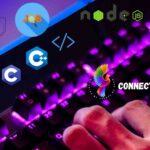Introduction
The placement roadmap for top companies is a document that describes the order in which you should complete each step of the job placement process. It’s important to know where you are going and how far along you are along the path so that you can properly prepare yourself for interviews, presentations and other opportunities.
1. General guideline for placement preparation
General guideline for placement preparation
There are many ways to prepare for placements; however, it is important to start early in order to make the most of your opportunity. You should know what you want to do with your career, how will you get from here to there, and how will you prepare for success?
Finding out about opportunities available: If a company is looking for people who can fill specific roles within its organization then it will have advertised this job description on LinkedIn or other social media channels such as Google+ or Twitter etc., where potential candidates can view these vacancies directly through search bar within their website/application before applying directly onto employer’s own website (unless they already have been hired).
2. Required Skills
Skills required for a Data Scientist:
- Basic programming skills. It’s important to be able to create and modify programs in your preferred language, such as Python or R.
- Data structures. A good understanding of how data is stored in memory and on disk will help you understand how machine learning algorithms work with large datasets.
- Algorithms for Machine Learning (Linear Regression, Logistic Regression). These algorithms are used by most machine learning frameworks like TensorFlow or Theano; they’re also often used by non-machine learning libraries like Scikit-Learn or Lasagne; but the latter three are not covered here because they’re more focused on developing models than developing pipelines that connect those models together via graphs labeled “Model” instead of “Pipeline” (as shown below).
3. Optional Skills
Optional skills are not required for the role, but can help you get a higher salary. They’re more relevant for senior roles and in-house roles than full-time jobs.
Optional skills are more relevant for technical roles (such as data science) than they are for CS/IT positions, so if you want your job to pay well, it may be best to focus on one or the other.
4. Focus Areas
- Focus Areas
Focus areas are where you will spend most of your time in this role. For example, if you’re working with a database team and they need help with their data science projects, then that’s probably where you’ll be spending most of your time. You may also have some specializations within one focus area (for example: Database Engineering), but overall it’s very important that all engineers know how to work across multiple areas without being limited by them.
5. Static (with development)
- Static analysis is a method of analyzing code. It consists of three steps:
- The first step is to analyze your program’s source code, looking for bugs and other problems. This can be done by running the compiler on it or, more commonly today, through static analysis tools such as Find Bugs (JVM) and Static Analyzer (C/C++) . These tools give you detailed information about what parts of your program are most likely to cause problems.
- For example, they may detect that a variable has been declared but not initialized correctly or that an array was declared before being used anywhere else in the program (a common type error). They’re especially useful when working with large programs because they give you an early warning sign before any errors occur during runtime execution time!
6. Dynamic (with development)
The focus of this section is to help you understand the most important software engineering topics in a more comprehensive manner. This can be useful for students who are interested in pursuing careers in software development, as well as professionals who want to learn more about their field.
- Data Structures
- Algorithms
- Operating Systems
- Distributed Systems and Networking (including Web)
Please note that you can learn more by reading the content in some of these sections directly and not just from the summary.
The content is detailed and comprehensive. You can learn more by reading the content in some of these sections directly and not just from the summary.
The priority of placement preparation should be based on the priority of companies, so that you are able to get a good job at an appropriate company with adequate salary and benefits package.
Conclusion
These are just some of the most important tips for your success in placement. In our experience, the best way to be successful is by identifying which skill set you have and then working on developing them. This will help improve your chances of getting placed at a company that really needs the skills that you can offer them.
Do Read: Case Study: Dynamic Approach, Placement Strategies- A plan of Succeed. Click Here






